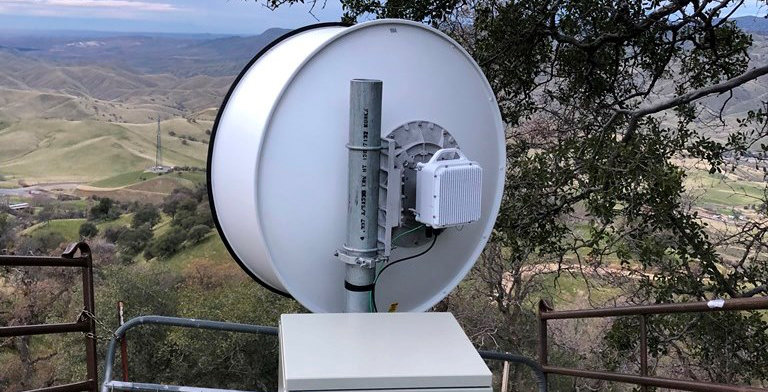It’s been said that there’s nothing better than fiber for a backhaul network. While it’s true that fiber delivers high throughput and a long lifespan, fiber brings with it serious issues for consideration. Our Navigator microwave radio – with its fiber like capacity – resolves these issues at significantly lower initial and long term costs.
Whether you’re installing new fiber or leasing fiber lines, there are high costs and time delays involved. Where geography allows for fiber to be trenched and legal obstacles can be overcome, new fiber has to be direct buried, pulled, or blown into conduit or inner duct, installed aerially between poles, or retrenched which could delay installations for months or even years. Fiber leased lines, if they are available, have to be provisioned and require lengthy contracts with recurring monthly fees.
We spoke recently with a systems integrator who installs new fiber as well as wireless backhaul systems for their customers. Their range for trenching new fiber is US$23-$26 a linear foot. At 1 mile (1.6km), for example, and at any average of US$24.50 per linear foot, the cost is significant – about US$130K. This does not include the costs associated with pulling permits, purchasing ancillary equipment, or paying monthly power costs, or the amount of time it takes to accommodate permitting bureaucracy.
Now let’s look at leasing fiber circuits (where they are available, which isn’t everywhere). The range here is very large – from about US$2,000 to US$10,000 per month, over the customary five-year lease term, and that doesn’t take into account the time required for provisioning the leased line(s). The resulting costs can be staggering, from $120,000 to $600,000 per line over a typical five-year term.
Microwave links can be installed within a few days compared to the many weeks, months – and sometimes years – needed for fiber. While some network operators are willing to deal with the wait for fiber, they may not want to deal with its cost. Deploying a point-to-point microwave link can cost only a few thousand dollars, with a minimum of labor.

Trenching fiber, when possible, is a MINIMUM of THREE TIMES more expensive than deploying a link of Navigator radios. TCO cost estimate is based on trenching a fiber path of 1m/1.6km. Costs will be significantly higher when trenching fiber over longer distances.

TCO cost estimate after five years for fiber versus Navigator is a MINIMUM of SIX TIMES more expensive.
For example, the long term costs for a BridgeWave Navigator microwave link are a fraction of an equivalent fiber run while providing similar capacities. Navigator’s site leasing costs may only be a few hundred dollars per month due to Navigator’s fiber like capacity delivered using just a single multi-channel Navigator radio. The radio’s ultra-high capacity also greatly reduces equipment cost compared to fiber, as well as other licensed microwave systems. Providing further savings, Navigator’s built-in 10G switch allows seamless low cost integration with other network equipment. Savings at installation for a short one mile path may be as much as 80% of a similar fiber path. Even for prior installed fiber runs where there are no additional fiber installation costs, over five years Navigator will still provide an 80% cost benefit over fiber due to the much reduced site leasing costs for microwave. The savings provided by Navigator increase greatly for longer.
As for the lifespan of a microwave link, it can be even longer than 10 years. Microwave link replacement has nothing to do with longevity or reliability of the microwave radios, but with the rapid evolution in microwave radio technology and capabilities. For example, BridgeWave’s Navigator microwave systems can achieve for the first time in fixed microwave similar capacities to fiber and reach up to 3.2gbps per radio. This capacity can be further increased through built-in header and payload compression. Navigator technology also allows customers to upgrade their Navigator installations for this added capacity without the requirement to purchase additional radios, or physically re-configure fielded Navigator radios. This is because Navigator includes quad modem technology, allowing a customer to operate with the capacity they need to support their current requirements, and then grow that capacity by adding more carriers in the future as capacity demand increases.
Customers may also benefit by swapping out their older radios for more modern radios like Navigator, which provides increased capacity and features while re-using existing infrastructure, such as already installed antennas. At BridgeWave, we’re careful to maintain a common antenna interface (RBWN) with our latest wireless systems, plus create structures in our new radio systems that can support third party antennas.
A more holistic view toward today’s networks is that fiber and modern fixed microwave systems can work well together to meet a customer’s complete backhaul network requirements. These technologies can inter-operate and provide complete coverage while allowing customers to reduce their up-front and long term costs.

